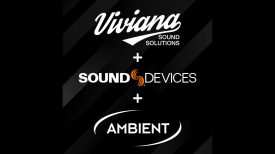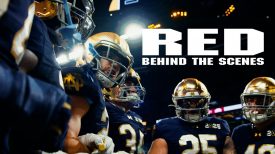Guest post by Spencer Chumbley:
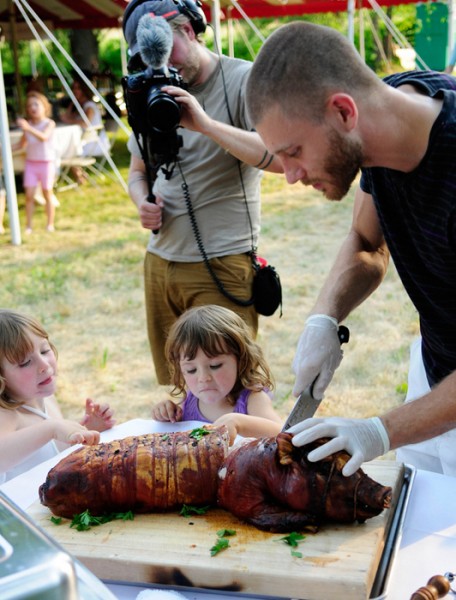
Wisconsin public television has a secret. It’s not a dirty secret, nor an embarrassing one, but a little-known documentary food show called Wisconsin Foodie. Now in its fifth season, Wisconsin Foodie is an Emmy-nominated independent television series dedicated to discovering the stories behind the food we eat.
Before becoming involved in the show last summer, I read an interview with creator Arthur Ircink. One quote stood out to me. When asked about what inspired him to create the show, he said that it was his goal to “to make ‘local’ television cool”. Ircink seems to be succeeding. Wisconsin Foodie currently airs on PBS affiliates statewide, and on public television stations in Chicago and Minneapolis.
It was this forward thinking that led me to the show—and I knew the innovation would continue when Ircink agreed to let me introduce my Nikon DSLRs to his production workflow. The show has been traditionally shot on Sony’s EX1, but the shallow depth-of-field offered by the DSLRs really allowed the food—the show’s main character—to shine.
I worked with Wisconsin Foodie on several shoots throughout this summer using various incarnations of a Nikon DSLR rig. This footage now appears in the latest season of the show, available via traditional broadcast and web release on Vimeo.
Check out the episode below. The footage featuring shallow depth-of-field was shot on either a Nikon D7000 or a D800 in segments 1 and 3 of the BBQ episode below, and segment 2 (Black Earth Meats) of the second episode.
Wisconsin Foodie – Milwaukee’s North Side from Wisconsin Foodie on Vimeo.
Wisconsin Foodie – Pinn-Oak Ridge Farms from Wisconsin Foodie on Vimeo.
While I am not a seasoned filmmaker, Dan Chung has been gracious enough to let me write here about the equipment I’ve been using since making my foray into the video journalism world. I discovered my passion for journalism—at the time it was mostly photojournalism—halfway through grad school in London, amid the fall 2010 tuition fee protests. With all the raucous action in the streets and on campus, video became an obvious choice.
I bucked the Canon trend (mostly by mistake) and traded my Sony DSLR in for the Nikon D7000; I also invested in the Nikkor 24-70mm f2.8. Owing to that initial investment, and Nikon’s most recent release of the D800 and D600, I have solid roots in the Nikon camp for the foreseeable future. I used the D7000 from March of 2011 until June 2012, when I upgraded to the D800.
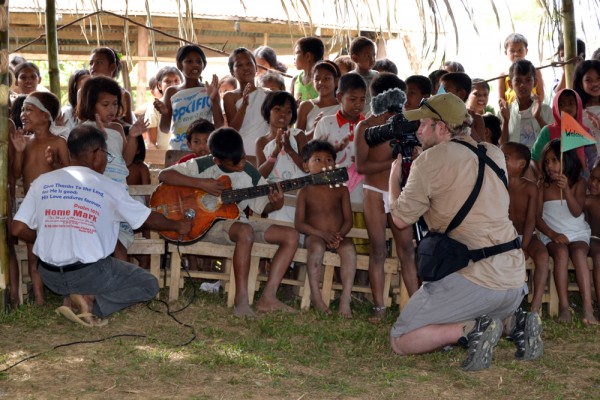
For a “prosumer” body in the hands of a novice, the D7000 can pack a punch. I used the Nikon D7000 to launch a video-based independent media project in Milwaukee, make on-location short films for the NGO Plan International in the Philippines, and cover the Timorese presidential elections as a freelance photojournalist. The D7000 performed despite some glaring and all too common drawbacks, the worst being the inability to control aperture settings while recording or in live view. Moving up to the D800 has been a real pleasure, but I’ll leave the technical reviews to the site’s editors.
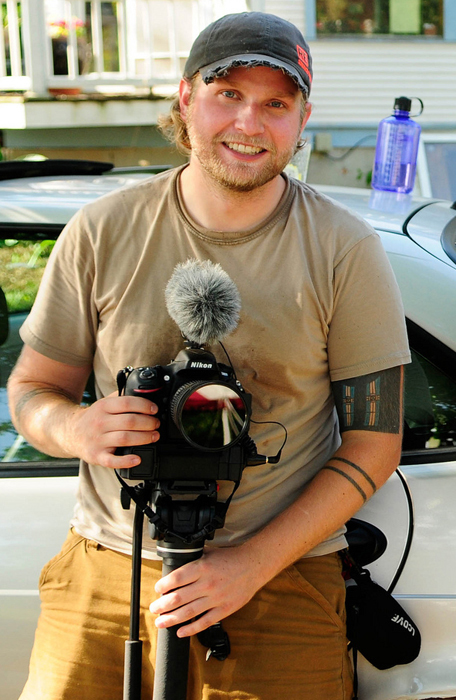
Shooting with Wisconsin Foodie last summer gave me an opportunity to field-test additional equipment I bought since shooting in the Philippines on the D7000. As a twentysomething, I often opt for products with the highest value-to-price ratio I can afford; use the equipment until I’ve saved enough for an upgrade; and then sell what I have to finance the new gear. As such, my rig for the run-and-gun documentary production of Wisconsin Foodie consisted of:
Nikon D800 (or D7000 prior to upgrade)
Nikkor 24-70mm f2.8 FX
Sigma 70-200mm f2.8 FX
Tokina 11-16mm f2.8 DX (on D7000)
Beachtek DXA-DSLR Pro audio adapter
Rode NTG-2 or Rode VideoMic Pro
LCDVF Viewfinder
Promaster Variable ND Filter
Manfrotto 561BHDV-1 Fluid Video Monopod
As is evident, I prefer the versatility of zoom lenses and one-button audio recording. This is mostly due to the fluid subject matter and the cinema verite-style of Wisconsin Foodie.
I want to highlight the Manfrotto 561BHDV-1 Fluid Video Monopod as an excellent tool for the run-and-gun DSLR shooter who is not partial to shoulder rigs. (I purchased it after seeing this excellent short video review.) The Manfrotto allows for traditional static shots, pans, tilts, higher vantage shots, and other interesting fluid movement. It can also be positioned creatively under your arm (see photograph) to allow the camera to be used more like a traditional video camera for verite-style shooting. Best of all, it’s compact enough to fit in a medium-sized duffel bag.
As for the camera itself, using a DSLR on Wisconsin Foodie was a wonderful way to highlight the food itself in a new and interesting manner. The shallow depth-of-field offered by DSLRs cannot be matched by traditional HD video cameras. (Of course, there can be consistency problems when marrying two different cameras in the edit.) When color, texture and visual appeal overall is needed to highlight the local culinary culture of Wisconsin, DSLRs may be the way to do it. It’s likely that Wisconsin Foodie was the first public television show in the state to utilize HD-DSLR technology.
The ever-declining cost of DSLRs is allowing young filmmakers and visual journalists at all levels to make their impact on the visual landscape, whether at the local level, on public television, or at an international level, through traditional news reportage.
To find out more about Wisconsin Foodie visit www.wisconsinfoodie.com.
Spencer Chumbley is a photo/video journalist and is currently a fellow at Fault Lines, Al Jazeera English’s documentary program (which just happens to be shot exclusively on DSLRs and cinema cameras such as the C300). Follow him on twitter @SpencerChumbley or visit his website.





